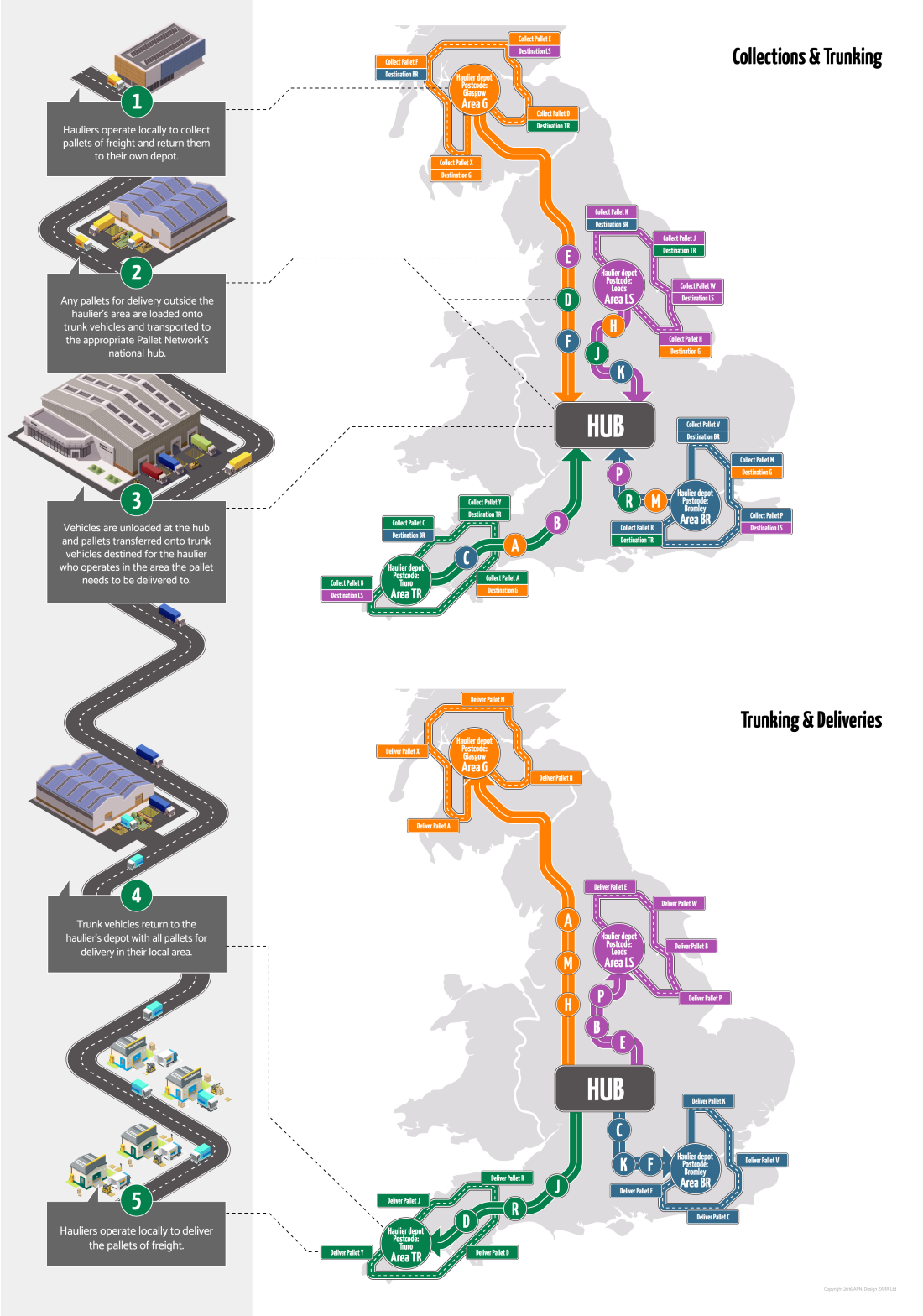About Pallet Networks
What are Pallet Networks?
Pallet networks are co-operative organisations made up of groups of professional hauliers working together as Members, Shareholders or Licensees, providing cost-effective, nationwide, next day freight delivery services.

Because of the way they operate, pallet networks are the most cost-effective and environmentally efficient forms of road freight transportation.
What are the benefits of using a Pallet Network?
Using a Pallet Network to move freight enables customers to benefit from economies of scale in transport, without the need for investment in equipment and IT. Pallet networks offer next day deliveries to the vast majority of the UK, some offer weekend and Bank Holiday deliveries too. Customers have access to the latest track and trace technology ensuring security of their freight and providing high levels of customer service.
What are the benefits of joining a pallet network?
The pallet network operating model has the advantage of allowing relatively small pallet loads to be delivered cost-effectively and quickly, with savings for both the transport operator and the customer.
Being part of a pallet network gives a transport operator access to customers in all parts of the UK, secure in the knowledge that other members have been stringently vetted to ensure security of loads, reliability of service and financial security.
Why should I join a Pallet Network
On joining a pallet network you will be able to compete on a nationwide basis. For example, you can collect one 250kgs pallet in your local area and have it delivered the next day by 9am! Pallet Networks enable you to be a national service provider with a guaranteed working practice in place between the members.
How do I join a pallet network?
Each pallet network is unique. To find out which pallet network is right for your business see the Member page.
Green Credentials
Pallet networks comprise local operators; any potential UK customer is no further, on average, than 6 miles from a pallet network member. Due to their proximity to the local market and because of the hub and spoke network that allows consolidation of freight, high levels of vehicle capacity utilisation are achieved, currently reaching more than 72% vehicle fill compared to 51% in some road freight sectors. This improved efficiency requires and estimated 800 fewer vehicles to transport the same amount of freight on the road. Fewer vehicles mean less congestion, less noise and reduced carbon and other noxious gas emissions.